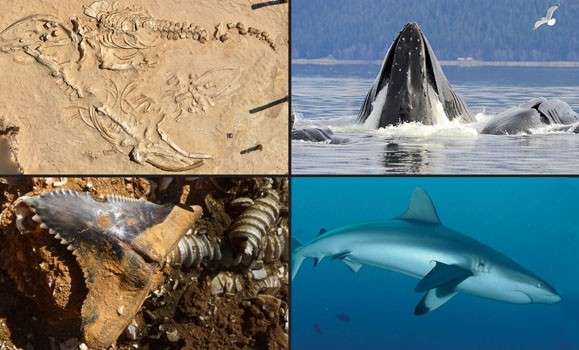How the fossilized past can help predict our oceans' future

The fossils of marine species that went extinct millions of years ago are offering insight into species that may be at risk for extinction today, as well as "hotspots" where that extinction risk may be even greater.
Dal researchers Heike Lotze and Derek Tittensor, both of the Department of Biology, joined a international team of ecologists and paleontologists to study fossil records from the past 23 million years—the time period most closely resembling Earth today—and combined that data with what we know about the present state of our oceans. The study was published in Science on May 1.
"We set out to answer a question: over the past 23 million years, what was it that made some species more vulnerable to extinction?" says Dr. Tittensor, an adjunct Biology professor with Dalhousie and scientist with the United Nations Environment Programme World Conservation Monitoring Centre.
"Our idea was to map marine extinctions in a world with and without humans, in order to understand the baseline of extinction risk in the ocean," said Dr. Lotze, Canada Research Chair in Marine Renewable Resources and associate professor at Dal. "Areas that have naturally high extinction risk may need extra management and conservation efforts, especially if they also face high pressure from human activities in today's ocean."
A global collaboration
Drs. Lotze and Tittensor collaborated together in a working group through the National Evolutionary Synthesis Center (NESCent), a non-profit science centre dedicated to evolutionary research. From 2011-2013, they worked alongside paleontologists to discuss human impacts on the oceans, aiming to produce a synthesis picture on how modern species extinction risk looks based on the present-day distribution of species in the oceans.
Two critical findings came from the research. One is that what marine ecologists call "range size" can determine a species' risk of extinction. Range size is the total area over which a species is found. For humans, the range size is very large, as they are found nearly everywhere on the planet but polar bears, for example, have a much smaller range size as they only live in arctic regions. Though range sizes vary substantially among ocean species, the research showed that small range sizes made species significantly more vulnerable to extinction.
The other key finding is that different types of species have different susceptibilities to extinction. For example, the study indicates that mollusc and corals tended to be more resilient species, while whales and dolphins are more prone to extinction.
Protecting species at-risk
Drs. Tittensor and Heike were also able to map the presence or absence of human influences such as pollution, overfishing, or climate change on the oceans. Based on combining these findings, the study identified areas like the Caribbean and Indo-Pacific as extinction hotspots due to their rich biodiversity, high impact levels and concentration of extinction-vulnerable species.
"We know now which regions of the oceans are particularly susceptible to higher levels of extinction," says Dr. Tittensor. "This should start us thinking how best to keep these extinctions from happening. Extinctions are forever; those species aren't coming back. And if you lose a species, you've lost a part of the oceans biodiversity."
Dr. Tittensor says recent evidence has shown that humans have accelerated extinction rates enormously, which increases our onus to ensure biodiversity's future.
"It is in our own interest to try to manage the oceans sustainably, and hopefully our work will contribute to this by providing information on extinction risk."
More information: Paleontological baselines for evaluating extinction risk in the modern oceans Science 1 May 2015: vol. 348 no. 6234 pp. 567-570. DOI: 10.1126/science.aaa6635
Journal information: Science
Provided by Dalhousie University



















